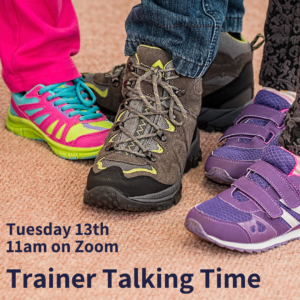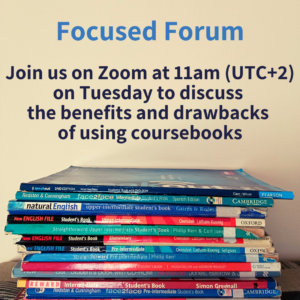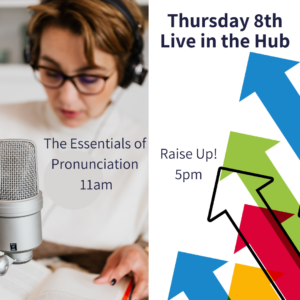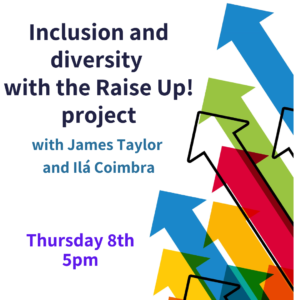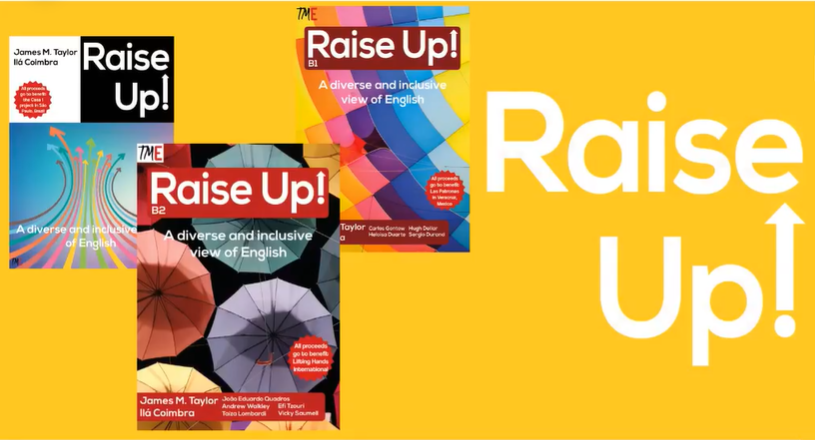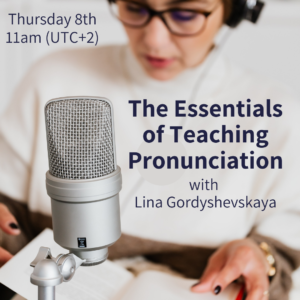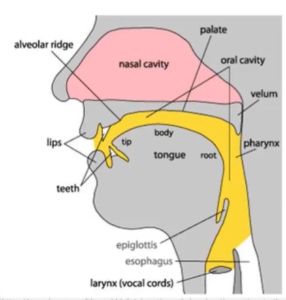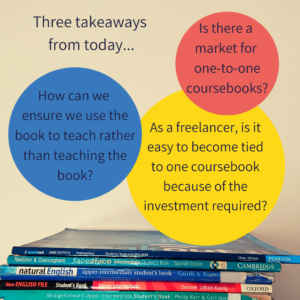Wow, it’s been a massively busy couple of weeks in the TEFL Development Hub. Looking back over the posts to generate the questions for the Coffee Break there’s been so much and always the quality of contributions has been great! Thank you all so much!
Over the last few weeks we’ve been looked at (new or at least new to me!) expressions, including “mediation”, “on-boarding” and “back-channels”, we’ve swapped tips about CV design, learning management systems and using google maps in class as well as talked about some big issues in ELT like inclusivity, the role of the teacher and, of course, our developing thoughts around online, hybrid and socially distanced teaching.
Some of these threads were brought up again in the Coffee Breaks, at their normal slots of 11am and 5pm (CET). Here’s the notes from the combined sessions, we hope they’re useful.
Note-taking… “it’s fun to take notes feeling like a student again!”
Are students not progressing as quickly as in previous years?
It certainly feels like many of our students are not moving as quickly as might expect them to this year, and this seems to be a problem lots of us are noticing. Can we expect them to be working in the same way as normal when we are in the middle of a pandemic and things have been disrupted for over a year (for most of our students)? We think not and while lots are still doing well, others aren’t and it’s problematic for all concerned.
Is reading the problem?
Are teen students lacking concentration and motivation when dealing with reading texts? Is this because we get information so immediately nowadays? Is it only in the English classroom or symptomatic on the wider educational plain? We wondered whether it was more of an issue in language and humanities subjects which are less ‘logical’ than scientific and mathematical subjects – there’s more to be ‘read around’.
However, this concentration issue seems to be less of a problem for business English students, who are in general thriving more in an online environment.
The contribution of mobile phones
We also talked about separation anxiety which teens (and adults) can suffer when separated from their phones and the use of digital wellbeing apps to make them (and us) more aware of how long we spend on our phones and for what. There was also a definite feeling that we shouldn’t be judgemental of how parents dealt with phones and screen time during the pandemic. There was also talk around fostering autonomy with learners – however we reached the conclusion that those who were responsible learners before would likely be more autonomous post-pandemic.
Here were some fun videos we thought of sharing with people on the topic of phones:
Google maps
We also talked briefly about Google Maps – great for personalisation, e.g. for learners to show you their route to school or their favourite local place, etc.
The online learning conversations continue…
The shift in learning, teaching and training online continues to develop and deepen.
We talked about how increasingly on initial teacher training courses like the Trinity CertTESOL and the CELTA planning points are being added asking trainees to describe how it would be different in an alternative learning and teaching environment, whether that be face-to-face or online.
We wondered whether between trainees who had done their courses online or face-to-face, who would be an advantage at interview? The feeling was that it’s easier to move from online teaching into the physical classroom than vice-versa. The feeling was that teaching skills are perhaps more natural when we’re together. One trainer said they often suggested to trainees that a class is a bit like a party in your house, you want people to mingle and have a nice time and with reference to making sure fast finishers are appropriately occupied, “you wouldn’t leave someone with an empty glass, would you?!” All this added to the idea that new teachers might be better off training online rather than face to face. We noted that there’s no difference in the syllabus on the Trinity and Cambridge training courses and the qualification and certificates are exactly the same.
In terms of hiring teachers, there are certainly new questions to add in around experience and comfort of working online and hybrid around interviews. Teachers who don’t have experience will be at a disadvantage.
Now we’re all more comfortable with Zoom, many schools are working with “Zoom windows” (not to be confused with hybrid teaching) where a student can just connect online if they can’t come to class for a week or so because they are quarantined or confined to home temporarily. This started for many because of COVID restrictions but has now been used in all sorts of circumstances; students who are ill, who are away (perhaps with divorced parents who don’t live as close), student who are tired, or because it’s raining! We need to draw the line and make sure these tools are used appropriately.
In some schools class sizes have had to come down because of the pandemic, will they be able to go back up again? Will the English teaching business be financially sustainable if we have to have smaller class sizes?
Hybrid classes have their pluses, for sure. For many students they are more convenient but are they as effective? The problem seems to be with engagement; one member told a story about a fabulous student who was “in class” while watching a football match at the same time! We talked about the possibility of having some kind of agreement or contract with students about how to behave. This lead to talking about the importance of good “on-boarding” procedures.
One contributor said they preferred teaching online as they can go on mute and just listen rather than get caught up in more active roles in monitoring. If we can listen better, we can better understand students needs and more easily focus on examples of language to follow up on. They said that with breakout rooms we can have more control about who goes where.
And teaching pronunciation with masks…
This is another new area of challenge. There were all sorts of thoughts on the subject… some said students might feel better able to experiment with sounds from behind a mask. Another idea was for students to make the sounds and the identify what was physically going on. It was then related to creating independent learners and an interesting conversation on our role as teachers; to encourage independence or to maximise how much we can help in an hour. We agreed that it depends on the student.
And while we’re talking about pron… a top tip; use voice-recognition software to help students practice as well as being a good way to create a safe space for students to practice until they get more confident.
Storing all our materials
Another advantage of working online is that we no longer need to carry everything about from place to place and from country to country. We love the search feature in Google Drive that searches for key words in titles and also throughout the text… a real life saver! And a real space saver too. We can also easily edit and improve our material and adapt it for different learners. Jim Scrivener was quoted as saying that teachers should “Throw away all your materials” as was Mari Condo’s concept of get rid of everything you haven’t used for a year.
Related to the “travelling teacher”, we doubted whether the annual TEFL migration would happen this year. Will ther be summer schools? What’s going to happen in the UK and Ireland (traditionally large scale summer tefl employers)? And then what about the supply of teachers from the UK into the EU post-Brexit? We’re living with uncertainty.
Thinking critically
We talked about critical thinking and about how it is a key skill and was thankfully being introduced into coursebooks. One member is doing his MA in TESOL dissertation around critical thinking to judge the effectiveness of critical thinking of materials over a defined course of study. We talked about critical thinking around diversity and inclusion issues and developing an awareness of our own biases too. We also talked about our increased understanding of mediation.
Here are some resources:
- Here’s an article to learn more about mediated learning
- John Hughes’ book Critical Thinking in ELT: A working model for the classroom
- Penny Ur presented on critical thinking in 2017. You can see the slides of her presentation here.
And thank you! Thank you all for coming and thank you for connecting, sharing and developing with us all! Thank you too to the note-takers, it’s great to be able to share so much of what was said so that we can all see everything!
See you soon!

